The most common type of pathology of the spine – lumbar pain in the lower back. The largest percentage of people with degenerative disc disease of the lumbar spine is located over the period of a mature age, after 30 years. The disease is due to degeneration of the cartilage of the spine and intervertebral discs. The disease is characterized by severe painful crises within the department of the lower back.
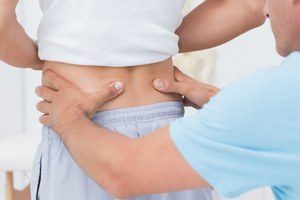
The reasons for degenerative disc disease of the lumbar spine
The reasons for which this disease is acquired, most often, these are the following:
- small intensity physical activity;
- disease of the thyroid, the cardiovascular system, GASTROINTESTINAL;
- high physical activity, weightlifting,
- disease of the vertebral joints, in particular rheumatoid arthritis
- spinal the under-development;
- flat feet ;
- vertebrates of the injury, primarily attributable to the shareholders of the lumbar and the crusade of the department;
- is not the proper metabolism;
- the degeneration of the spine associated with the changes.
In the risk group of the disease lumbar osteochondrosis includes persons who:
- have a curvature of the spine;
- obese, disturbed metabolism;
- a long time in a bent position;
- have a genetic predisposition;
- are in a high stress environment;
- disorders of sleep, a little rest;
- submitted to the agency of hypothermia;
- are representatives of these professions, such as dockworkers, builders, drivers, and specialties related to the constant to find the computer.
The symptoms of the degenerative disease of disk and lumbar
In addition to the pain felt contracted osteochondrosis of the lumbar spine and division, especially in times of heavy loads, also make the distinction between other symptoms of this disease, which is manifested by the following:
- a dull ache, going to a hotbed of inflammation in the leg;
- the strengthening of the syndrome painful when you lift heavy, a change in body position, coughing, sneezing;
- when the debt is in the same pose, the blood accumulates in the home, and the slightest change in posture, a sharp pain;
- constant tension of the erector spinae;
- lumbago lumbar to the slightest cold;
- numbness femoral, gluteus, legs and feet;
- a tingling sensation in the legs;
- a spasm of the arteries to the extent of the lack of the heart rate;
- the pathology of the sweat glands;
- the drying of the skin in the area of the foyer of the pain and sensitivity disorders.
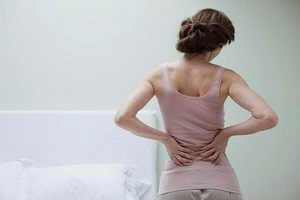
The main symptoms and signs of degenerative disc disease of the lumbar spine in women
Osteochondrosis of the lumbar spine is a disease characterized by degeneration of the intervertebral disc. Over time, as well as excessive burdens they are slowly erased, to become flat. It is fraught with the limitation of mobility and the emergence of unpleasant sensations because of samishisa vertebrae that are putting pressure on the nerve roots and the blood vessels. Recognize the symptoms of degenerative disc disease of the lumbar spine in women and signs using the proposed tips.
Lumbar low back pain — causes, treatment, diagnosis
Lumbar – it is the part of the vertebral column, which represents the maximum load during jumping, running, walking, the seats, the lessons of the strength of the sport, and in other situations. The lumbar consists of five vertebrae, is situated between the sacrum and the department of the vertebral column. When the lesion of the lumbar region, with heavy loads on the spine, the deformation of the intervertebral discs, the destruction of the fibrotic ring that supports an intervertebral disc, a modification of the cartilage, impairment of the circulation. When the rupture of the fibrotic ring is a protruding disc, the development of the intervertbral of the hernia.
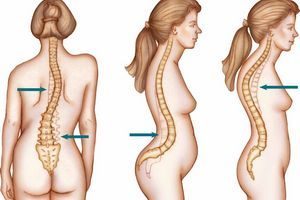
Osteochondrosis of the lumbar spine and the division is a serious condition, accompanied by pain that spreads into the lower leg, low back pain, the development of complications. In the heart department Usupovskiy of the hospital, the patient can obtain advice from a qualified physician, a neurologist, to go from a diagnosis, to know the cause of the development of the disease, to get an effective treatment and recovery. In the branch of neurology to treat autoimmune disorders, disorders of the blood circulation of the brain, chronic pain, the effects of brain injuries, aging-related diseases.
Osteochondrosis of the lumbar spine and of the division: the symptoms
Main symptom of osteochondrosis is part of the pain. The patient gets tired quickly, he often has headaches, worried about poor sleep, irritability. With the development of the disease symptoms appear negative on the part of the genito-urinary system, increasing the sensitivity of the feet, the skin of the extremities is dry, there are often muscle cramps, during the pain crisis disrupted the sweating.
Osteochondrosis of the lumbar spine and of the department is characterized by the deformation of the intervertebral disks, changing their shape, of the dystrophy, the displacement, the coracoid process of the spread of the spine. With the development of the degenerative disease disk lumbar is a loss of flexibility of the spine, which is niinivaarantie the nerve endings, the sacred nerve endings that form the sciatic nerve. Develops the complication of sciatica. The cause of the development of sciatica is compression of the nerve root at the level of the lumbar spine, the deformation of the intervertebral discs, their shift, the coracoid proliferation of the vertebrae, hernias. The sciatica is accompanied by severe pain, diminishes the quality of life of the patient.
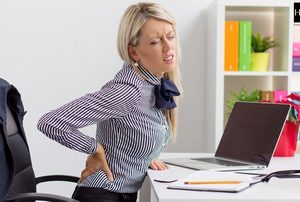
During the development of a degenerative disc disease of the lumbar spine appear to be the syndromes of the following:
- the pain syndrome.
- radicular syndrome.
- ischemic caudal.
- the syndrome vertebral
The opinion of an expert
By the number of use of a doctor degenerate-dystrophic disease of the vertebral column occupy the top places. According to statistics, in 60-80 % of cases of exacerbation of degenerative disc disease leads to the development of a temporary incapacity to work. In the structure of the inability on the part of degenerate-degenerative diseases represent 20% of the cases. Lumbar low back pain is the most common of the localization of the pathological process. The doctors confirm that the share of this disease represents 60-70 % of cases.
The diagnosis of pathology in the hospital is going to the aid of the x-ray, MRI and ct scans. Osteochondrosis is dangerous complications. In severe cases, the user loses the ability to self-care. Therefore it is important to consult your doctor for the implementation of the survey and of the correct destination for processing. Depending on the degree of degenerated by the degenerative process in the lumbar spine by the doctors of the hospital to develop an individual therapeutic plan. It includes tools for etiotropnoy, patogeneticheskoy and symptomatic treatment. In addition, the treatment plan contains recommendations on the prevention of relapses of the disease.
Osteochondrosis of the lumbar spine: treatment
The treatment of degenerative disc disease of the lumbar depend on the neglect of the disease. Osteochondrosis distinguish several degrees of development of the pathology:
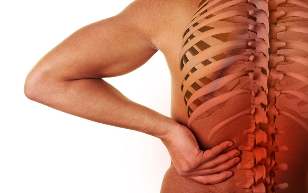
- easy the degree of development of the disease, the fibrous ring around the disc has cracks that are filled with content gelatinosa of the nucleus. The disks at this stage of development of the disease weakly deformed, worried about the pain, what can be done for the pain in the heart. The pain occurs in the lower back when you lift the weight and the sudden movement. The pain may be steady or abrupt, sudden.
- the process of deformation of the intervertebral disc continues. Get stuck nerve endings, reduces the space between the vertebrae, appears to be expressed discomfort in the lumbar region, it is often difficult to the pain of the attacks with unpleasant sensations in the lumbar region and the sacrum.
- the third degree of development of degenerative disc disease of the lumbar spine and is characterized by the rupture of the fibrotic ring around the herniated disc occurs in the squeezing of a gelatinous core, the compression of the nerve roots and the blood vessels develops intervertebral disc herniation. The patient at a stage of development of the disease suffers from a violation of work of the internal organs, is slouching.
- the fourth degree of the disease heavy is a stage of the disease. There is a deformation of the spine, resulting in disability.
Severe disease often requires surgical treatment because of the final of the deformation of the vertebral column. The spine is distorted bony growths in a patient with disturbed physical activity. Among women and men of the progression of the disease leads to disturbances in the functioning of the genitourinary system: in men disrupted the power in women during pregnancy occurs a deformation of the intervertebral disc, affecting the internal genital organs.
Vascular-compression ischemia
The violation of the vasculature of the spinal cord and priphriques structures leads to a "thinning" of the structure of the intervertebral disc and result in abnormal mobility of the spine, the formation of osteophytes and neoarthrosis.
The Compression of myelopathy
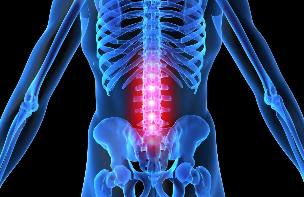
The narrowing of the spinal canal, causing periodic, paroxysmal weakness in the legs, pain "cross" syndrome, with lumbar the impact on the back of the thighs. In this context, develops sga/hypotonia calves/glutes, the disappearance plantar, anal and reflexes of the achilles, a paresis of the foot.
The treatment of degenerative disc disease lumbar
Treating disease is possible and necessary. Naturally, in this case you will help only a comprehensive therapy, which aims to reduce the symptoms of the autoimmune disease, the restoration of the structure of the spine and the prevention of the recurrence of the problem.
A comprehensive therapy of the above-mentioned disease includes:
- The receipt of medicines.
- Seat of injection.
- Gymnastics and PHYSIOTHERAPY.
- Massage and chiropractic treatment.
- Physio.
Drugs of osteochondrosis of the lumbar
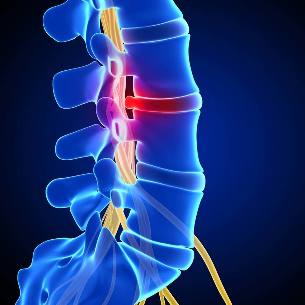
- The pain killers.
- Restorative chondroprotectors.
- Vitamins. Optimum — group B.
- The injection. Anesthetic recovery of the cartilage and the normalizers of the microcirculation of the blood.
- The local tools.
Gymnastics in osteochondrosis of the lumbar spine
An important element of the restoration of the spinal column. All procedures are designed individually, focusing on the lifting of the pain and muscle spasms, normalization of blood circulation, of the work of restoration of the intervertebral disc.
Massage in osteochondrosis of the lumbar region
Massage — mandatory treatment of the disease. It allows, like to relax, and train the muscles of the lower back, induces the process of recovery of the cartilage, relieves the pain. Most often when the disease can be described above, is used for therapeutic, acupressure, hardware, suction cups, vacuum and connective tissue woven massage.
Physio
Generally, physio are appointed by the patient of osteochondrosis of the lumbar spine only in the remission phase of the disease, after having experienced a period of worsening of the problem. Classical and modern methodology:
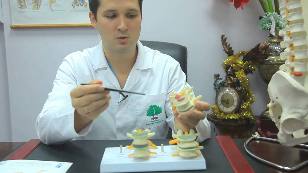
- Acupuncture. The special effects of needles on acupuncture points of the back.
- The stretch. The classical technique of stretching the spine on a care-pull the sofa, produced qualified chiropractor doctor.
- Electrophoresis. Well-known since the 60s, a non-surgical method of external exposure of issues of the affected area.
- Machine traction decompression. Automated equipment of traction of the spine on a medical complex.
- Shock-wave therapy. The use of infrasonic waves for the treatment of degenerative disc disease.
- The osteopathy. Integrated methodology combines elements of chiropractic, the massage and the therapy of orthopedics.
- Magnetopuncture. Direct exposure to an alternating magnetic field on the spine.
- Laser puncture. The treatment of acupuncture points induced by a radiation beam.
- The electrostimulation. The use of small variable currents on the infested areas.
The prevention of the degenerative disc disease of the lumbar spine
After the passage of a comprehensive treatment and procedures of physical therapy, a long period of time required for maintenance therapy are, at this time of the spine is still weak and in need of support. In addition, prevention is designed to prevent the emergence of degenerative disc disease lumbar. The main activities are:
- Regular balanced and physical exercise, preferably under the supervision of qualified staff orthopaedic surgeon.
- The normalization of the mass of the body: quite often, aggravating a factor affecting the formation of degenerative disc disease, it is precisely the overweight person.
- The correction of the power supply. In a regular supply of food, you need to include foods that are rich of elements such as calcium and magnesium. It is necessary to exclude too fat and the dishes, and other food, do not fall within the definition of healthy food.
- The refusal of bad habits. Alcohol and smoking enhance the destruction process in the body, which relates to the onset of the degenerative disease of the disc.
- The correct posture. Don't forget to check your posture, especially if your job is permanent with the " finding of the computer or other seated activity. Also pay attention to your child how much and how long he is sitting. Normal good posture will allow you to prevent the onset of scoliosis and respectively in the future of degenerative disc disease.
- The use of good shoes, clothing and accessories, the refusal of the east by an ordinary carrying heavy loads. Bad shoes, heavy bitch on the shoulder, the work of docker — all these factors may have a decisive impact on the beginning of the formation of destructive processes in the spine.


































